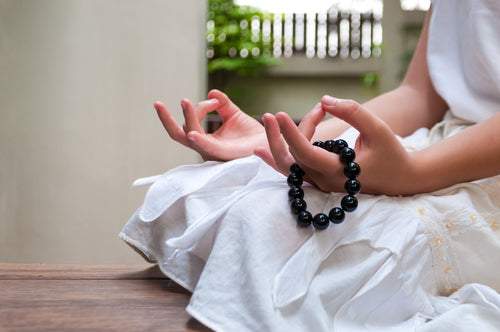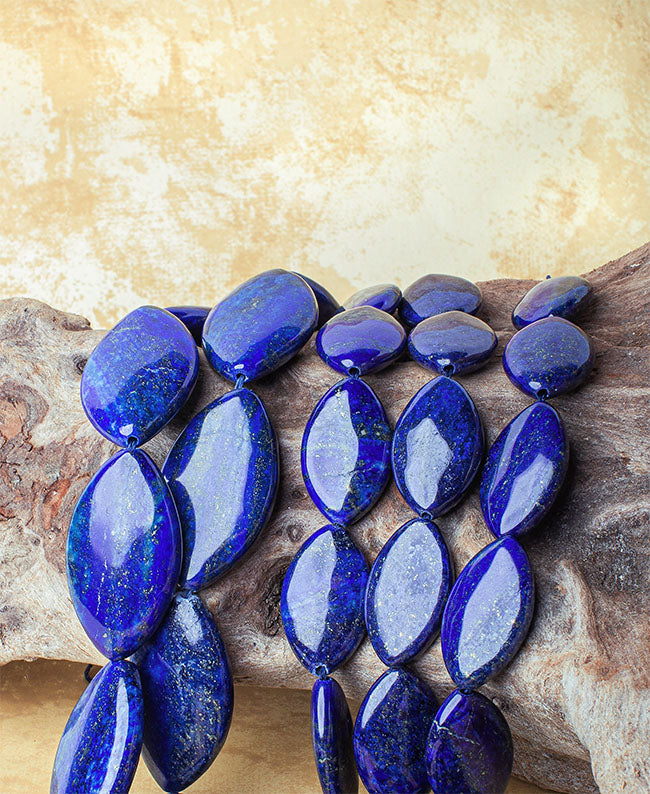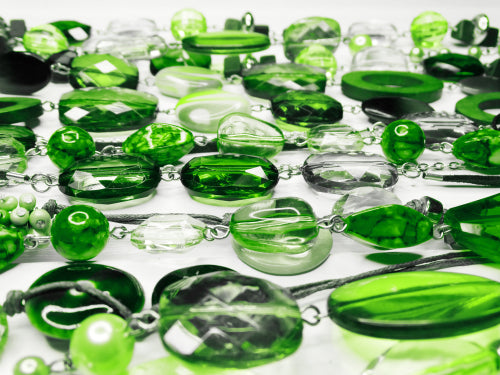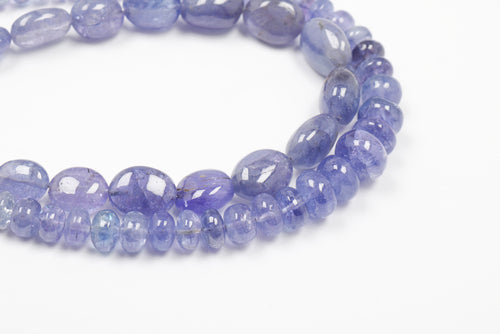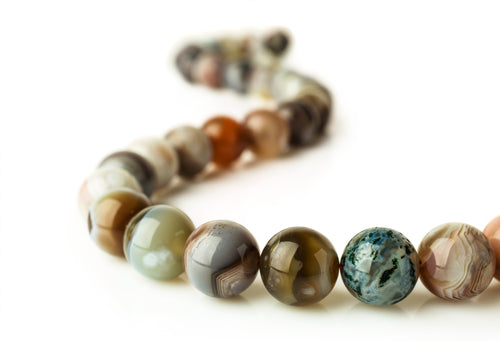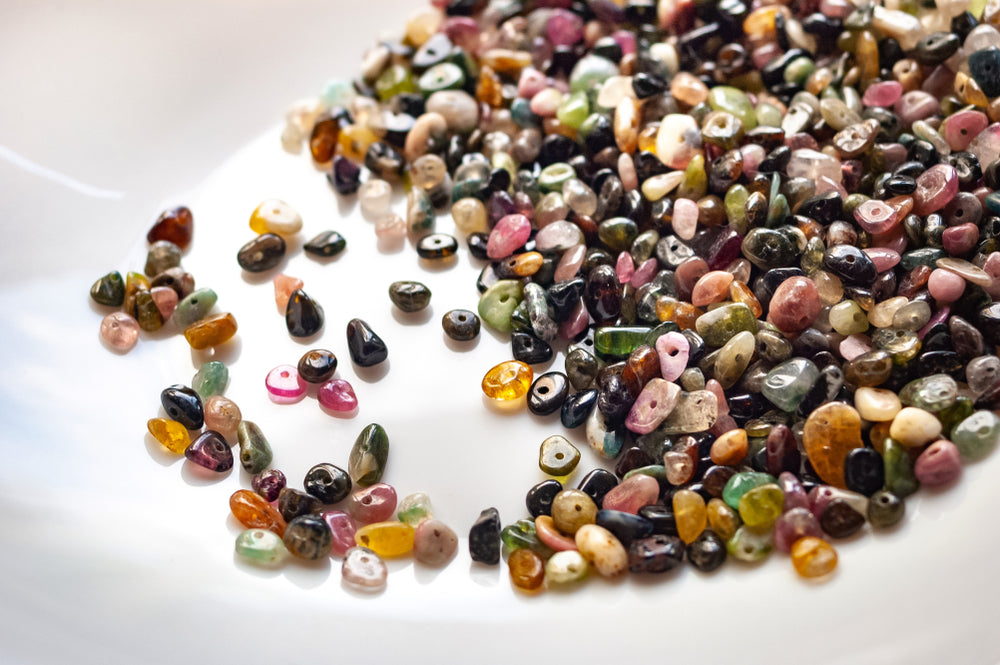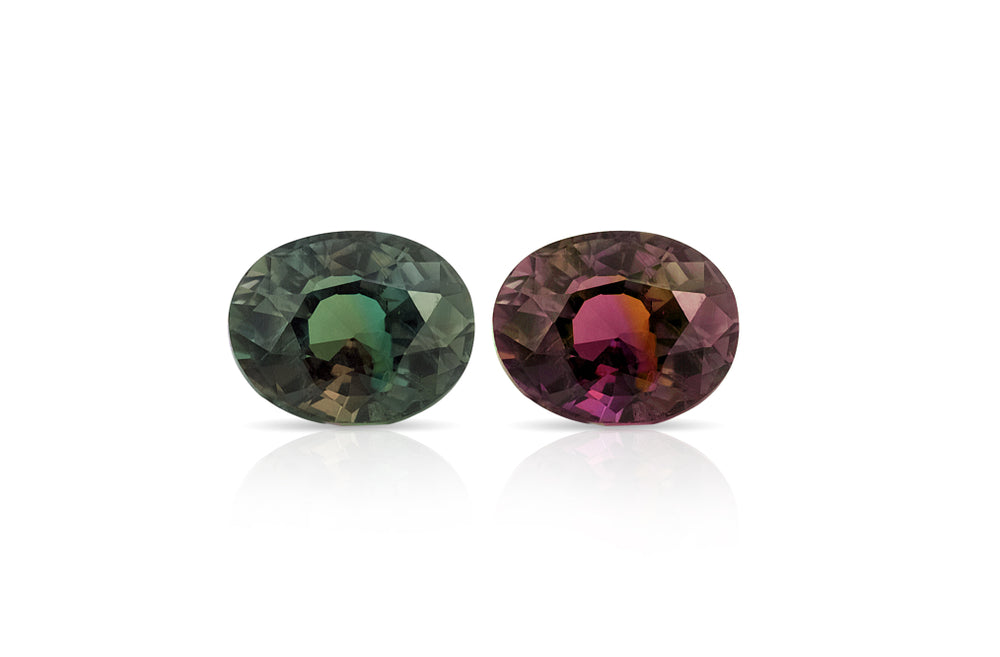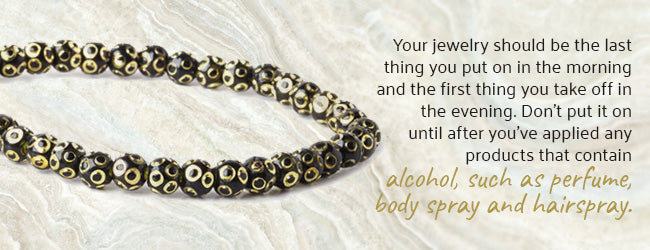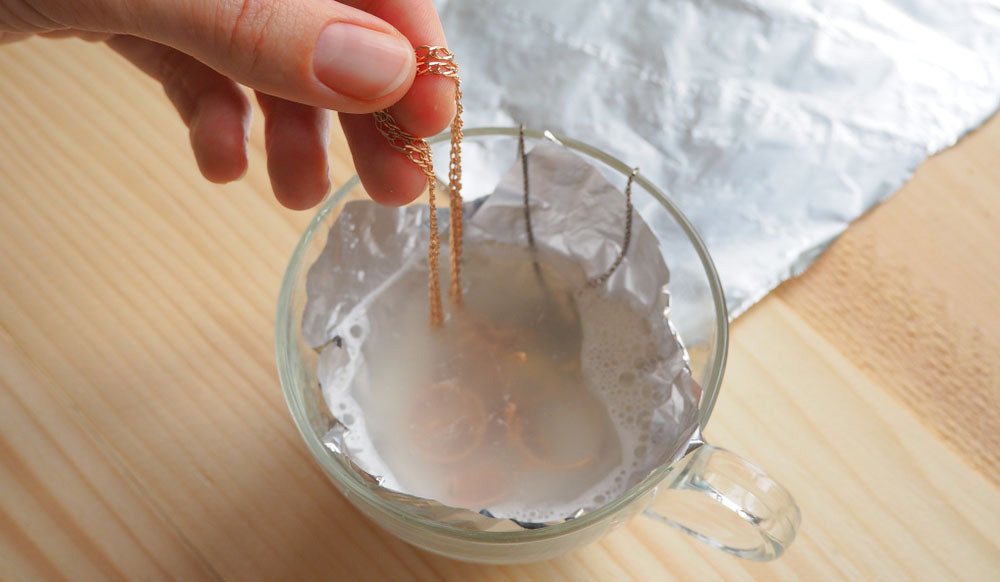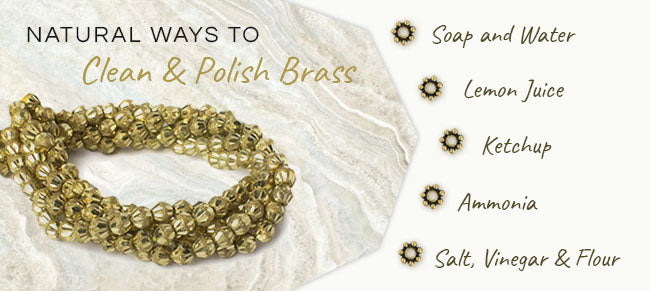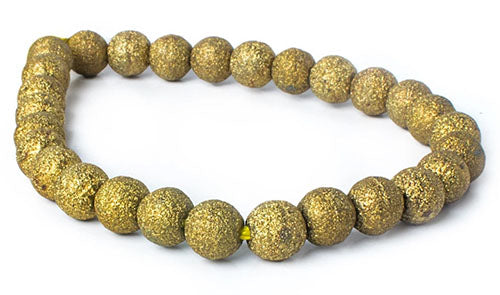The colors you choose to adorn yourself with tell the world a little bit about you and your preferences. Did you know, though, that they can also reflect your mood and energy? Colors are powerful, and research has shown time and time again that they can have an impact on your mood and behavior as well as the impression that you make on other people. You may have even chosen your favorite colors based not only on their appearance, but also on the way they make you feel. The most incredible part is that you are probably drawn to certain colors on a subconscious level without even knowing why.
Colors affect us in numerous ways. They can alter our personal moods and feelings as well as our perspectives of other people and even our surroundings. The ways in which they affect us are largely associated with how they behave in nature. For example, blue is the color of clear skies. As children, we knew that clear, blue skies meant that we could play outside and have fun. And from a deeper evolutionary standpoint, we may associate clear skies with plentiful crops and a lack of potentially dangerous storms. For these reasons, most humans are reminded of calmness and stability when presented with the color blue.
Crystals and gemstones also carry powerful energies and have the ability to impact our lives. They are believed to have healing properties, many of which are linked to their colors. Gemstone beads come in every color imaginable, and they make lovely accessories for any outfit. If you want to take your beading to the next level, though, and create pieces that reflect your mood and energy as opposed to just being beautiful to look at, learning a bit about color psychology is a great idea.
Color Psychology in Beading

Colors can be used for everything from evoking certain emotions and controlling stress levels to influencing our thoughts and even the ways in which other people perceive us. Let’s take a closer look at the psychology of several much-loved colors and their coordinating gemstone beads.
White
White is closely associated with innocence, purity and protection. It is also commonly thought of as the color of kindness and illumination. Because white is made up by the presence of all colors, it is believed to carry all of their properties.
When used in jewelry, white gemstones are said to protect the wearer. They can also assist the wearer as they embark on new beginnings and adventures.
If you want to use white in your beaded creations, diamonds are one of the most obvious choices. Of course, diamond beads don’t exactly fit into everyone’s budget. If you are looking for something a bit more affordable, quartz is a good option. Other white and clear stones that work well for jewelry-making include rainbow moonstone, white howlite, selenite and some varieties of topaz.
Black
On the other end of the spectrum is black, which is the absence of color. It is known as the color of strength, power and authority. However, it is also often associated with death, sadness and evil. It is dark and mysterious and frequently has negative connotations.
In jewelry, black gemstones are often used to protect or give strength to the wearer. Some black gemstones are also said to instill confidence. There are plenty of black gemstones to choose from, but some of the most popular options include onyx, tourmaline, jet and obsidian.
Red
Red is regarded as a color of energy, passion, fire and action. It is a very powerful color, and since it is the color of blood, it has strong associations with vitality and life. Red can also be used to warn of danger and is, of course, the universal color for stop signs.
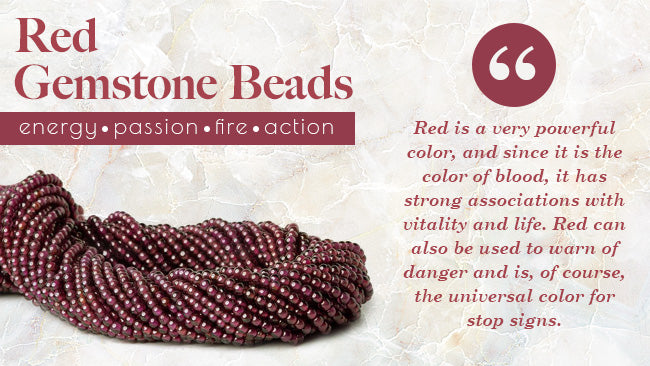
Red gemstones are often worn to energize the body and heal the root chakra. They are believed to bring passion into one’s life, improve sexuality and enhance attractiveness to others. Red or ruby beads, for example, are believed to promote love and passion. Ruby is one of the four precious gemstones and is one of the most well-known red crystals. Garnet is another popular red gemstone that is a bit more affordable.
Pink
Like red, pink is closely associated with love. While red is more fiery and passionate in nature, pink has a more gentle loving energy. Pink is the color of unconditional love, compassion and tenderness. It is also a very feminine color that is excellent to use for healing the heart chakra.
Pink gemstones are often used to bring comfort and hope during difficult times. They can be helpful during the grieving process and are believed to calm the nerves. They can be worn to attract love and kindness and to strengthen all types of relationships. While commonly associated with romantic love, pink gemstones can also be used to attract and/or strengthen familial love and the love that exists between friends.
There are several pink gemstones to choose from, but for jewelry-making, rose quartz is one of the most popular options. This soft pink stone is known as “The Stone of Love” and is prized for this reason. Other pink gemstone options include morganite, kunzite and rhodonite. For those who are looking to improve their self-love, rhodochrosite is an excellent option.
Blue
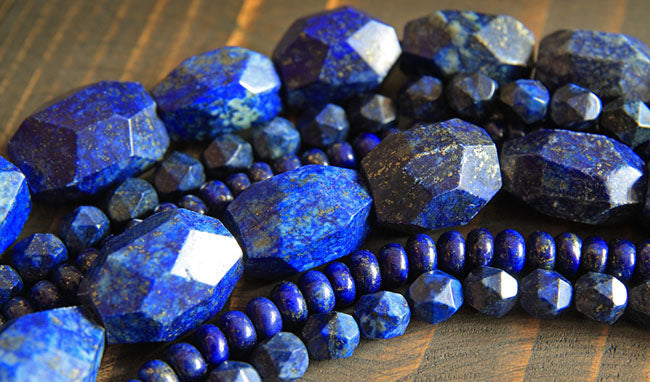
As mentioned above, blue is commonly associated with peace and calmness. It is the color of honesty, trust and sincerity and is closely linked to loyalty and reliability. It creates a sense of tranquility and can drive away stress and anxiety.
The color blue is also often used to enhance communication. Likewise, many blue gemstones are said to heal and open the throat chakra, which can approve one’s ability to communicate with honesty and openness.
In general, the stones that work best for promoting peace and tranquility are those that are light blue in color, such as blue lace agate, blue chalcedony or aquamarine beads. To create jewelry pieces that could help improve communication, choose darker blue stones, such as lapis lazuli or sodalite. Kyanite is a good option, too.
Purple
Throughout history, purple has been regarded as the color of royalty. It is also closely associated with religion and spirituality and is the color of mystery and magic. From a psychological perspective, it balances red and blue. Red adds energy and intensity to the color, while blue brings stability and tranquility. Purple is a perfect combination of the two and embodies the incredible attributes of both.
For centuries, purple was seen as a symbol of wealth. In fact, the purple amethyst gemstone was once worn by royalty and considered to be more valuable than diamonds. Today, amethyst is regarded as one of the most protective stones in the world of crystal healing.
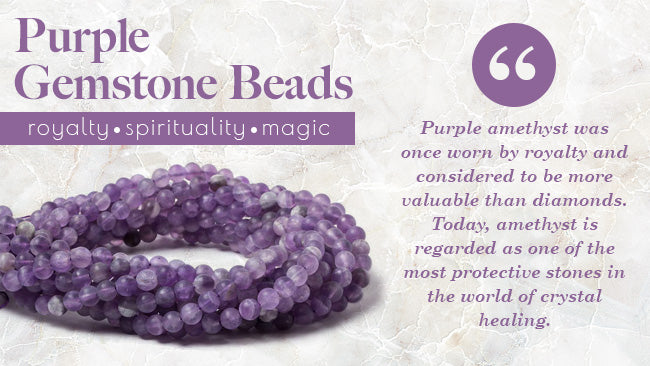
Wearing purple gemstones in jewelry can stimulate the third eye and crown chakras to enhance intuition and wisdom. Wearing purple can also increase one’s intellectual capacity and ability to form connections with the higher self and the divine. In addition to amethyst, other popular purple gemstone beads include charoite, lepidolite and certain varieties of fluorite.
Yellow
Yellow is a bright, vibrant color that is often associated with happiness and new beginnings. It’s the color of sunshine, hope, clarity and positivity. It has also been associated with creativity and intellectual energy.
Wearing yellow gemstones is believed to enhance communication and improve self-expression. It can also increase energy levels, improve focus and concentration and give the wearer clarity when making important decisions. Bright cheery gemstones, such as citrine and amber, are believed to drive away sadness and depression. These stones are said to carry the warmth and energy of the sun, so it’s hard not to feel bright and cheerful when wearing them.
Orange
Orange is known as the color of enthusiasm and joy. It is a highly energetic color that is also closely associated with activity and adventures. It is also believed to be the color of creativity. Orange can also be a powerful and attention-grabbing color.
While orange may not be the first color that comes to mind when you are thinking about gemstones, there are plenty of beautiful stones out there in this hue. Wearing orange gemstones promotes overall health and wellness. Doing so is also said to bring happiness and confidence. Orange stones can help with decision making, too.

If you would like to make orange jewelry, carnelian beads are a good option. Available in several different shades of orange, carnelian is a stunning stone that is said to boost confidence. It is also prized among many actors, actresses and performers and is known as “The Singer’s Stone” because it enhances performance and self-expression. If carnelian isn’t quite what you are looking for, other orange gemstones include sunstone, goldstone, fire opal and orange calcite.
Green
Green is the color of renewal, growth and prosperity. It has also been linked with luck and abundance. It is a positive color that helps balance the heart and the emotions, promoting love for others and for nature. Green is, of course, closely associated with money in our culture and is the color for “go” on a traffic light.
When worn in jewelry and accessories, green gemstones promote growth and are powerful tools for anyone who wants to advance or get more out of life. They can also help one overcome obstacles and difficulties, so they are great for anyone who is starting a new job, embarking on a new business venture, beginning a new relationship, etc.
Emeralds are the most well-known green gemstone, but there are plenty of others to choose from, too. Peridot beads are beautiful gemstones that are believed to dissipate negative patterns and help wearers realize that they are deserving of success. By wearing and working with this stone, it is possible to remove blockages that are preventing one from moving forward. Other green gemstones include prehnite, zoisite and aventurine.
Brown
Brown colors are closely associated with the earth and are said to promote security and stability. In crystal healing, they are often used for grounding purposes. Certain gems–like tiger eye–are also believed to release anxiety and fear and protect one against curses and negativity.

Wearing jewelry made using brown gemstones allows one to form a stronger connection with the earth. These stones promote feelings of home and stability and are believed to clear one’s thoughts and ideas. Brown gemstones aren’t as prevalent as stones in many other colors, but there are still a few different options to choose from. If you would like to use brown in your jewelry-making creations, try tiger eye, bronzite or picture jasper.
Conclusion
Choosing the right beads for your jewelry creations is about much more than deciding which ones look the best. If you want your pieces to truly have an impact, keeping color psychology in mind when selecting beads is a good idea.
As humans, we are impacted by colors in many ways. Sometimes, we are even drawn to certain colors on a subconscious level without even knowing why. For example, you may feel attracted to red or orange when you are feeling powerful. You might be drawn to shades of blue when you are in need of a bit of peace and relaxation. Color is much more powerful than many of us realize.
When you combine color therapy with the metaphysical properties of precious and semi-precious gemstones, you can create jewelry pieces that reflect your mood and personality or even make ones that have an impact on your overall health and well-being. It may be overwhelming at first, but by learning a bit more about color psychology and crystal healing, you can mindfully create pieces that are sure to be loved. At The Bead Traders, we have the crystal beads you need for all of your jewelry creations. Check out our full selection today!
FAQ's:
What are the chakra bead colors and meanings?
Chakra beads are gems of 7 different colors corresponding to our chakras, the energy centers in our body. The following table shows the gemstone or the chakra beads, their color, and the corresponding chakra.
|
Stone
|
Color
|
Chakra
|
|
Red Jasper
|
Red
|
Root Chakra
|
|
Carnelian and Picasso Jasper
|
Orange
|
Sacral Chakra
|
|
Yellow jade
|
Yellow
|
Solar plexus Chakra
|
|
Aventurine and Moss Agate
|
Green
|
Heart Chakra
|
|
Amazonite and Turquoise
|
Blue
|
Throat Chakra
|
|
Lapis Lazuli and Sodalite
|
Indigo
|
Third eye Chakra
|
|
Amethyst and Quartz Crystal
|
Purple
|
Crown Chakra
|
What bead color combination looks good together?
Whether you are choosing a color for your apparel, makeup, or bead, you need to know about the color wheel. Once you understand the color wheel, you can easily pick color combinations that look good together.
Complementary color scheme - If you want to create a strong and dynamic color palette, you should choose colors that are directly opposite to each other in a color wheel. The high contrast between these colors will make your beadwork stand out.
Split complementary color scheme – If a complementary color scheme is too bold for you, a split complementary color scheme can be the go-to idea. Choose a color of your liking, and pair it with any of the two colors lying on the sides of its complementary color.
You can choose to apply any color scheme using a color wheel. It is just about knowing a few rules and using your creativity to know what color can go with what color.
What does the black bead bracelet color mean?
Every bead bracelet represents something based on the color of the beads used. A black bead bracelet represents strength and authority. It symbolizes the attribute or ability to hold onto hope even in adverse situations. It shows the ability to stay positive even during draining and unhappy times.
What is the best material to use for the waist bead pattern?
Waist beads are typically made using glass seed beads or metal beads.
What are protective beads?
Black beads are sometimes referred to as protection beads. The black beads are seen as a symbol of protection, strength, health, vigor, and good fortune.
Shop the Bead Traders today for expert-curated, high-quality gemstone beads, crystal beads, opal beads.












 When in doubt, silver is almost always a good choice. It pairs well with every color and even other metals. It conveys a classic sophistication that never goes out of style. Some of the best gemstone pairings for silver are turquoise, lapis lazuli, and celestial quartz. Silver pairs well with pastel colors (think Tiffany & Co.’s blue and silver box), but it also complements and enhances bold colors. It is considered a neutral color and feels very sophisticated when accompanied by other neutral colors.
When in doubt, silver is almost always a good choice. It pairs well with every color and even other metals. It conveys a classic sophistication that never goes out of style. Some of the best gemstone pairings for silver are turquoise, lapis lazuli, and celestial quartz. Silver pairs well with pastel colors (think Tiffany & Co.’s blue and silver box), but it also complements and enhances bold colors. It is considered a neutral color and feels very sophisticated when accompanied by other neutral colors.







 For an elegant beachy look, try our gorgeous Baroque Freshwater Pearls.
For an elegant beachy look, try our gorgeous Baroque Freshwater Pearls.


 For a polished look, add a focal bead or three to your beach beads. Our beautiful pendants will give you lots of options for styling your necklace. You can add whatever appeals to you or your clients. These are some of our newest statement gemstones.
For a polished look, add a focal bead or three to your beach beads. Our beautiful pendants will give you lots of options for styling your necklace. You can add whatever appeals to you or your clients. These are some of our newest statement gemstones.









